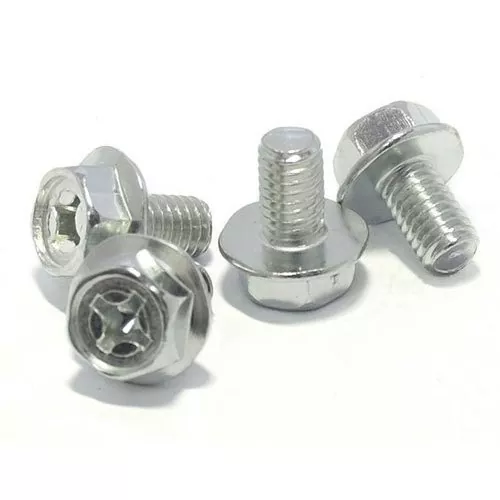How can you identify the grade or strength of a hex flange bolt?
2024-09-16

How can you identify the grade or strength of a hex flange bolt?
There are two common ways to identify the grade or strength of a hex flange bolt. The first is to look for markings on the head of the bolt. Most bolts will have markings that indicate the grade or strength, such as "8.8" or "10.9". These markings correspond to the bolt's strength in metric units of measurement.
The second way to identify the grade or strength of a hex flange bolt is to measure the diameter and length of the bolt and then consult a bolt grade chart. The chart will tell you the recommended grade or strength of bolt to use based on these measurements and the application requirements.
What are some common materials used to make hex flange bolts?
Hex flange bolts can be made from a variety of materials to suit different applications. Some of the most common materials include:
- Carbon steel
- Stainless steel
- Titanium
- Brass
- Aluminum
When should you use a hex flange bolt instead of a regular bolt?
Hex flange bolts are often preferred over regular bolts in applications where there are high vibration or torque loads. The wider flange on the bolt helps to distribute force and prevent damage to the surface it's attached to. They are also easier to tighten or loosen with a wrench or pliers, which can save time and effort in some situations.
What is the torque specification for a hex flange bolt?
The torque specification for a hex flange bolt will depend on the size and grade of the bolt, as well as the application requirements. It's important to consult a bolt torque chart or the manufacturer's specifications to ensure that the bolt is tightened to the correct torque. Over-tightening or under-tightening can result in bolt failure or damage to the surface it's attached to.
Conclusion
Hex flange bolts are a useful type of bolt that can provide extra stability in high vibration or torque load applications. It's important to properly identify the grade or strength of the bolt before use and to follow torque specifications closely to avoid bolt failure or damage.
Hangzhou TR Industrial Trade Co., Ltd. is a leading manufacturer and supplier of bolts and fasteners in China. We specialize in providing high-quality products at competitive prices, and we pride ourselves on our excellent customer service. Contact us today at manager@bestcofasteners.com to learn more about our products and services.
10 Scientific Papers on Bolt Analysis:
1. Tensile Behavior and Fracture Mechanisms of a T-Connector Used in Monopiles for Offshore Wind Turbines
2. Finite Element Analysis of Stress Concentration on Bolted Steel Joints under Different Temperature Conditions
3. Evaluation of Bearing Load Capacity for Hexagon Socket Head Cap Screws and Hexagon Flange Bolts by Finite Element Analysis
4. Research on Fatigue Performance of High Strength Bolts under Variable Amplitude Load
5. High Temperature Creep Study of Large-Scale Bolted Composite Joint at Bolt-to-Hole Clearance Fit Condition
6. Finite Element Analysis of Bolted Steel I-Beam Connections with T-Stubs
7. Experimental and Numerical Investigation of Prestressed Bolted Flange Joint under Internal Pressure
8. Optimum Bolt Tightening Sequence for Bolt-Clamped Laminated Composite Joints by Optimizing the Bending Strain Energy
9. Creep Buckling Behavior of Long Bolted GFRP Composite Sandwich Panels
10. Tension Failure Analysis of Bolted Anchorage of Super High Pylon



